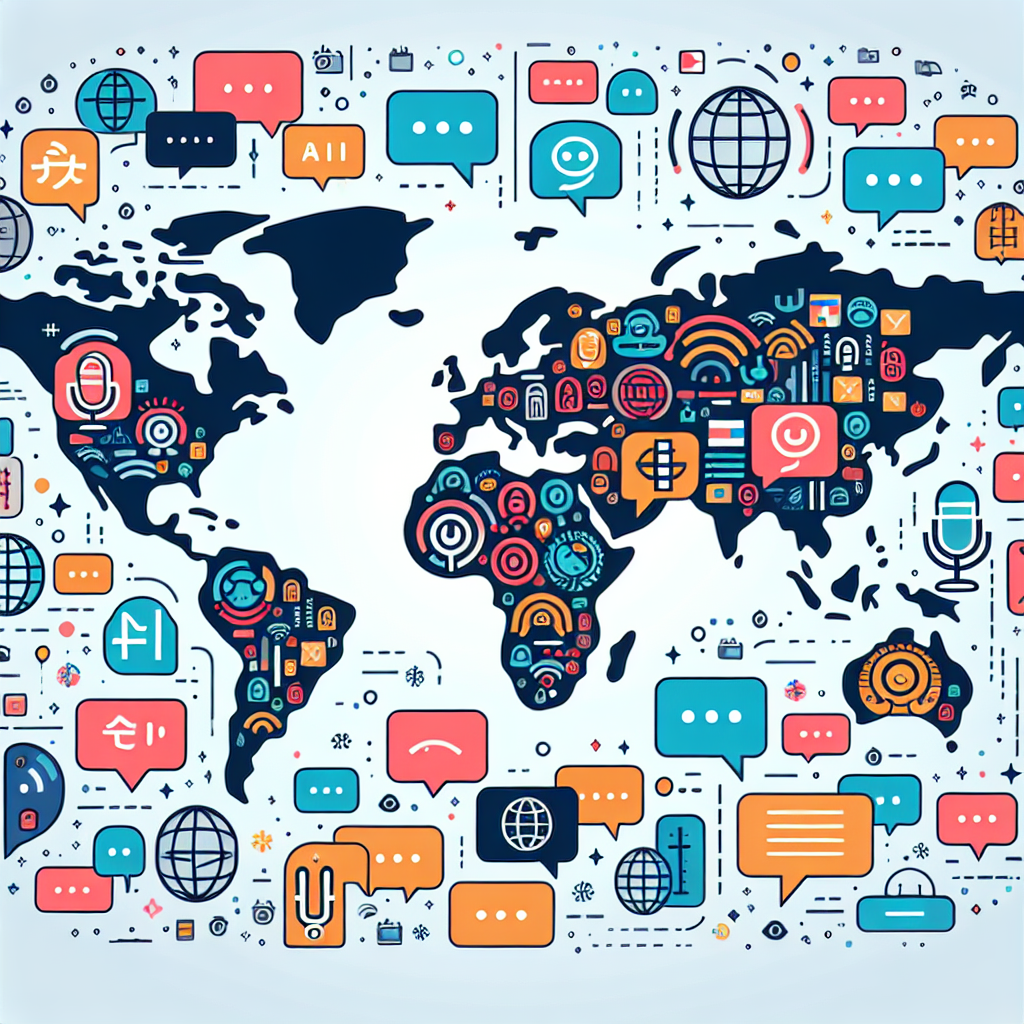In today’s globalized world, communication is key. However, language barriers often stand in the way of effective communication between individuals who speak different languages. This is where multilingual conversational AI comes in, offering a solution to overcome these barriers and facilitate seamless communication between people who speak different languages.
Multilingual conversational AI is a technology that enables machines to understand and process multiple languages, allowing for real-time translation and interpretation during conversations. By leveraging natural language processing (NLP) and machine learning algorithms, multilingual conversational AI can accurately translate spoken or written language in real-time, enabling users to communicate effortlessly across language barriers.
One of the key benefits of multilingual conversational AI is its ability to bridge the gap between individuals who speak different languages, allowing for more inclusive and productive conversations. Whether it’s in a business setting, a social interaction, or a customer service interaction, multilingual conversational AI can help facilitate communication and ensure that no one is left out due to language barriers.
Furthermore, multilingual conversational AI can also help businesses reach a wider audience and expand their customer base by offering support in multiple languages. This can lead to increased customer satisfaction, improved customer retention, and ultimately, higher revenues for businesses operating in a global marketplace.
Additionally, multilingual conversational AI can also be used in educational settings to help students learn new languages more effectively. By providing real-time translation and interpretation services, multilingual conversational AI can help students practice their language skills and improve their proficiency in a foreign language.
Overall, multilingual conversational AI has the potential to revolutionize the way we communicate across language barriers and foster greater understanding and collaboration among individuals from diverse linguistic backgrounds.
FAQs:
1. How does multilingual conversational AI work?
Multilingual conversational AI works by utilizing natural language processing (NLP) and machine learning algorithms to understand and process multiple languages. When a user speaks or writes in a particular language, the AI system analyzes the input, translates it into the desired language, and provides a response in real-time.
2. Is multilingual conversational AI accurate?
While multilingual conversational AI has made significant advancements in recent years, there are still limitations to its accuracy. Factors such as dialects, accents, and regional variations can impact the accuracy of translation. However, with ongoing advancements in AI technology, the accuracy of multilingual conversational AI is continually improving.
3. Can multilingual conversational AI replace human translators?
While multilingual conversational AI offers a convenient and efficient way to overcome language barriers, it is not intended to replace human translators entirely. Human translators bring a level of cultural understanding and nuance to translation that AI may not be able to replicate. However, multilingual conversational AI can complement human translators by providing real-time translation and interpretation services.
4. How can businesses benefit from multilingual conversational AI?
Businesses can benefit from multilingual conversational AI in several ways, including reaching a wider audience, improving customer satisfaction, and increasing revenues. By offering support in multiple languages, businesses can cater to a diverse customer base and provide personalized services to customers who speak different languages.
5. Can multilingual conversational AI be used in healthcare settings?
Yes, multilingual conversational AI can be used in healthcare settings to facilitate communication between healthcare providers and patients who speak different languages. By offering real-time translation services, multilingual conversational AI can help ensure that patients receive the care and information they need, regardless of their language proficiency.
In conclusion, multilingual conversational AI has the potential to revolutionize the way we communicate across language barriers and foster greater understanding and collaboration among individuals from diverse linguistic backgrounds. With ongoing advancements in AI technology, multilingual conversational AI will continue to play a crucial role in overcoming language barriers and enabling seamless communication in a globalized world.

